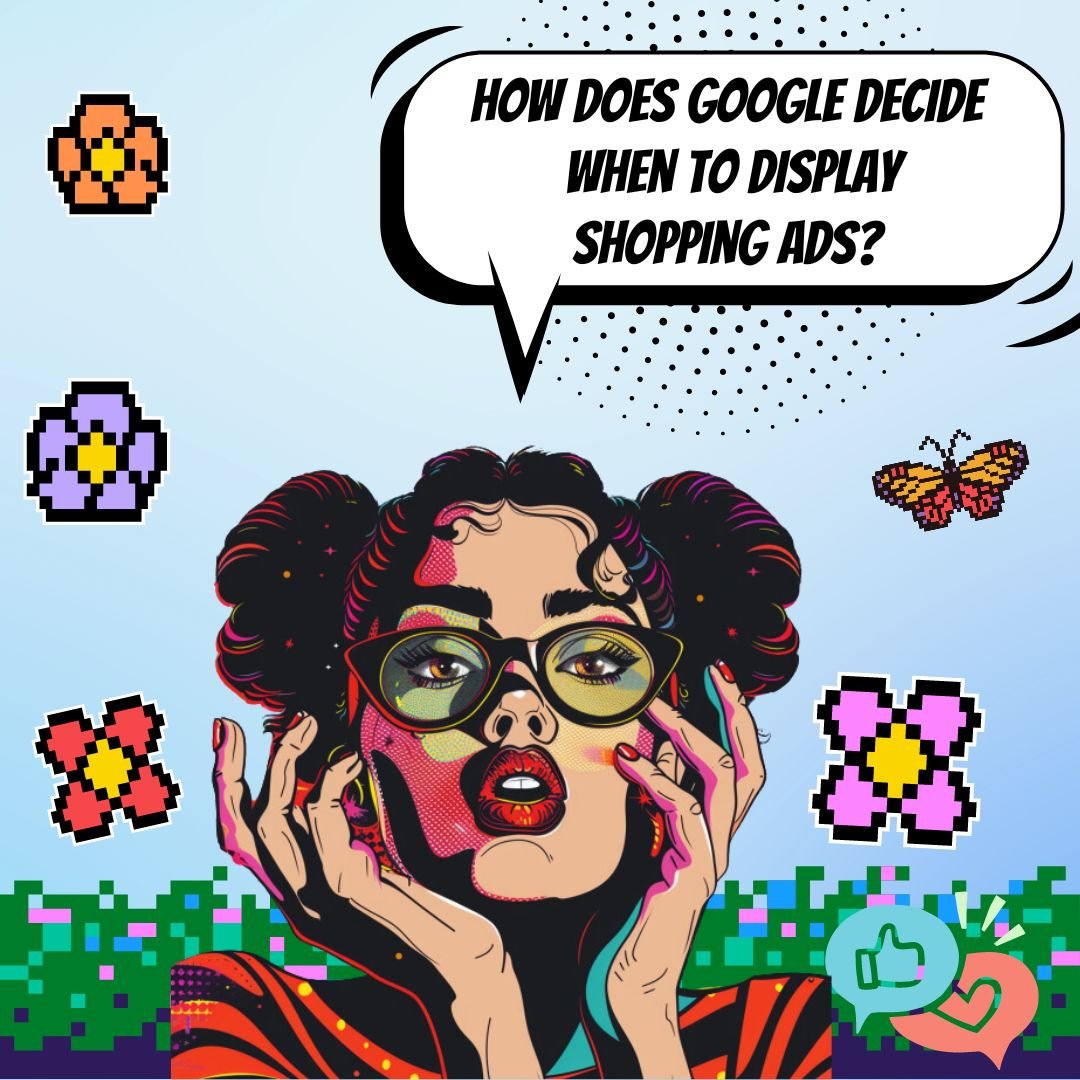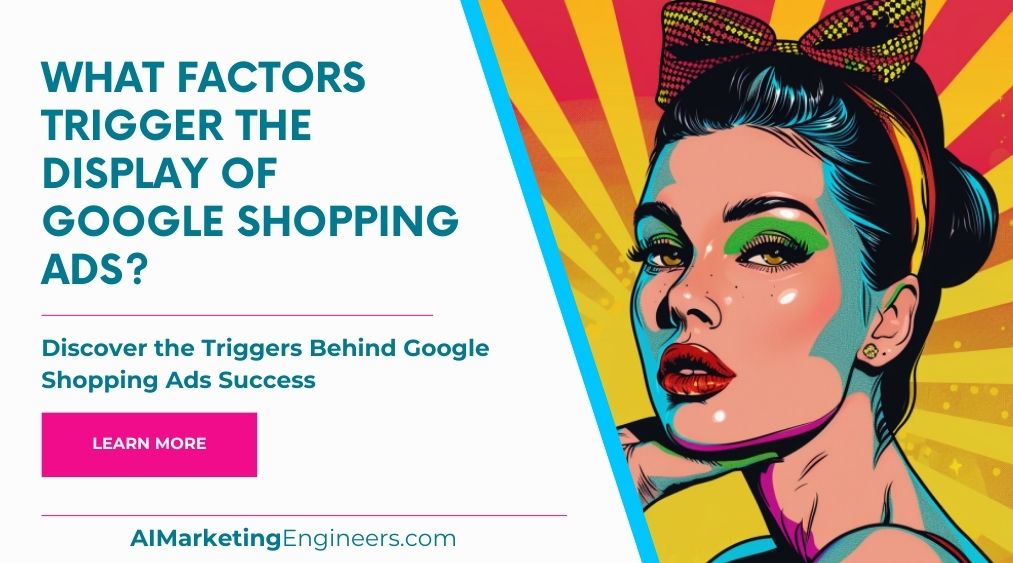Key Takeaways
✅ Targeting and Bidding Strategy: The magic behind Google Shopping ads is partly in how well you play the game of matching. Your products need to align with what shoppers are searching for, and your campaign settings must be smartly tuned—including those all-important bidding strategies that decide if you're a big fish in a small pond or the other way around.
✅ Product Relevance and Quality: Imagine a dating app that pairs people based on their interests. Now, think of Google Shopping in the same way. The more details and relevant information you give about your products, the better the chances they'll 'match' with a potential buyer's search. High-quality images and rich descriptions are like a good profile picture and a witty bio; they just draw people in.
✅ Ad Rank and Competition: It's a bit like a talent show where your ads are contestants. The bid you set, the relevance of your products, and how good your overall ad performance is—all these determine whether your ad gets the spotlight. But remember, you're not the only show in town. Competitors are also vying for that coveted top spot.
 Introduction
Introduction
Have you ever wondered what makes Google Shopping ads pop up just when you're pining for that perfect product? It's like they read your mind, right? But there's no magic here, just some clever behind-the-scenes action you can master too. Google Shopping Ads are the frontline troops in the battle for buyer's attention, a bit different than those old school text ads—they're sleek, visual, and if you do it right, they'll show up just like that best friend who always knows when you need a bit of retail therapy.
In the mix of e-commerce hustle, unpacking the key factors that trigger Google Shopping Ads feels like finding a treasure map. From the nuts and bolts of a great product feed to the secret sauce of product eligibility, and the wizardry behind bidding strategies, we're spilling the beans on it all. You’ll see just how pivotal high-quality product images and pinpoint descriptions are, and you'll get the scoop on matching your items to a shopper's desire better than anyone else.
We're not just here to wax lyrical; we’re dishing out the kind of insights that could transform browsers into buyers and clicks into currency. Stick with us, and by the end, you'll be holding a stack of actions you can take right now to fuel your Google Shopping Ads campaign to roaring success. Ready to get started? Let’s turn those secrets into sales!
Top Statistics
| Statistic | Insight |
|---|---|
| Retail Search Ad Spend: Google Shopping ads accounted for 76.4% in the US in Q4 2020. (Source: Merkle) | This statistic spotlights the dominance of Google Shopping in the retail space, drawing a clear picture of where retailers are investing their ad budgets. |
| Click Growth: A 10% year-over-year growth in clicks for Google Shopping ads in Q4 2020. (Source: Search Engine Land) | In the face of changing consumer habits, this growth indicates a shift towards more visually driven shopping experiences online. |
| Comparison Shopping: 65% of consumers use Google Shopping to compare prices. (Source: Jungle Scout) | It’s a huge signal to retailers about the importance of competitive pricing and the influence of price comparison on shopper behavior. |
| Product Search Starting Point: Only 35% of online shoppers start their product search on Google. (Source: Feedvisor) | This statistic can be a little alarming—why are we not seeing higher numbers? It poses a question about how we can better capture consumer attention from the get-go. |
| Quality of Product Feed: A key factor in triggering Google Shopping ads. (Source: Google) | It confirms what many suspect, the better the feed quality, the more likely your products are to show up. That’s straightforward, right? |
Understanding Google Shopping Ads
Have you ever wondered why some products just pop up when you're browsing online looking for something to buy? Google Shopping Ads could be the unsung heroes here. Think of them like those little billboards that appear exactly when you need to find a new pair of shoes or a coffee maker. They're different from those old-school text ads because they show you a picture of what you can buy, how much it costs, and where you can get it. Pretty handy, right?
Crafting the Perfect Product Feed
Now, to get your products to become stars on Google Shopping, you've got to start with a killer product feed. This is like the behind-the-scenes script that tells Google everything about your products. The more details and accurate information you provide, the better. Google's like a strict casting director here—it needs to know what you're selling, if it's in stock, and if it meets all the rules. Get it right, and you've got your product on the virtual shelf, ready for showtime.
Smart Bidding, Smarter Strategy
Here's where things get strategic. Your bidding strategy is how you decide to spend your money to get people to see your ads. You can go for getting as many clicks as possible or aim for the big leagues with strategies focused on the return on ad spend (ROAS) or cost per acquisition (CPA). Think of it like placing the perfect bet on a high-stakes game, where the game is getting people to click on your ads.
Pictures Worth a Thousand Clicks
Let's be real, quality is king, especially when it comes to product images and descriptions. Don't pull the curtain on your own show by using blurry photos or vague descriptions. Clear, crisp images and thorough details can make your products irresistible to shoppers. Remember, you want to tempt those potential customers with a visual feast that leaves them wanting to click 'Buy'.
High-Quality Products Take Center Stage
But it's not just about looking good. Google's pretty clever at figuring out if your product is up to scratch, and that's where product relevance and quality come in. Is your product categorized correctly? Is the price right? Are the shipping details spot on? Nail these and your products might just get the best seats in the house – the top of the search results.
Speaking the Shopper's Language
And then there's the magic words – or rather, the keywords. It's all about matching what your customers are searching for to what you're selling. Understand your shoppers, use the right lingo in your product titles and descriptions, and watch as the magic of relevancy makes your ads appear like a genie from a lamp.oogle Shopping Ads is not only about selling but also speaking the same language as your buyers, catching them exactly where their curiosity peaks.
By focusing on these key aspects, you step into a world where the triggers and levers of Google Shopping Ads reveal themselves. It’s about presenting a front-row product showcase, placing calculated bets on clicks and conversions, and sparking interest with visually captivating narratives. So, roll up your sleeves, and let's make your products the main attraction!
AI Marketing Engineers Recommendation
Recommendation 1: Optimize Your Product Feed With Relevant Details: Make sure your product feed for Google Shopping ads is not just a list, but a treasure trove of rich, pertinent information about what you have to offer. Use high-quality images, accurate titles, detailed and relevant descriptions, up-to-date pricing, and all the attributes Google requires. The more precise and comprehensive your product listing is, the higher the chances Google's algorithms will favor your ads. Why? Because these factors significantly affect your ad's visibility and relevance to searches.
Recommendation 2: Master the Art of Bidding Strategy: In the dynamic landscape of Google Shopping, adjust your bids based on product performance, seasonality, and the competitive landscape. Flexibility and adaptability are your friends here. For instance, set higher bids for top-performing products or during peak shopping seasons to stay ahead of the curve. Keeping an eye on trends can help you be proactive rather than reactive, giving you an edge over competitors. It's about finding the sweet spot where you're not spending too much, yet your Google Shopping ads are visible to the right people.
Recommendation 3: Leverage Smart Shopping Campaigns for Automation Edge: Have you tried Google's Smart Shopping campaigns yet? Use machine learning to your advantage. Smart Shopping campaigns can automatically optimize ad delivery to reach your predefined goals, like maximizing conversion value or driving in-store traffic. It takes into account a variety of signals such as search queries, market trends, and user behavior to place your products in the spotlight. Thus, it can be a powerful ally for entrepreneurs and businesses looking to stay relevant and effective in the dynamic e-commerce arena.
Relevant Links
Maximize Your ROI with Google Shopping Ads: Revolutionize Your Google Ads Campaigns with Chat GPT
Skyrocket Your Online Sales: Mastering Google Shopping Ads for E-commerce Success
Stay Ahead of the Curve: Top 10 Digital Marketing Trends for 2024
Leverage AI for Smarter Marketing: The Ultimate Guide to AI in Digital Marketing
Boost Conversions with SEO: Advance Your SEO Marketing Strategies for 2024
Conclusion
So, you've come a long way in understanding Google Shopping Ads and the key buttons you need to push to get your products front and center. Remember how we started by talking about the importance of these ads in the bustling market of e-commerce? The big takeaway is that these ads are not just regular billboards; they're like your product wearing its Sunday best at the exact moment a potential buyer walks by.
Your product feed needs to be on point, meticulously detailed, and structured so meticulously that it could pass as a work of art. Why? Because that's a cornerstone for triggering those nifty ads. And don't forget about making sure your products fit the bill in terms of eligibility – make friends with Google's rules, and you'll go far.
We meandered through the ins and outs of bidding strategies. Remember, how much you bid can toss your product into the spotlight or let it linger in the shadows. And when it comes to product images and descriptions, quality is king. A picture is worth a thousand words, and adding a few choice words to that can make a whole world of difference.
But let's not wander off without underlining the importance of product relevance, quality, and milk-carton accuracy when it comes to categories, pricing, and shipping. Get these wrong, and your chances of showing up when it counts could slip away like sand through your fingers.
Lastly, think about the shopper - what are they looking for? Can your product titles and descriptions read their mind? Because when you manage to match your treasure to their quest, that's when the magic of ads happens.
Now it's time to roll up your sleeves and get to work on your own Google Shopping ads. Which piece of our conversation struck a chord with you? Was it the geeky pleasure of organizing your product feed or the creative zest of sprucing up those images?
Get out there and make those ads work for you. Picture your product stepping into the spotlight the next time someone's searching for that perfect something you sell. How satisfying would that be? Now, guess what? You've got the know-how to make it happen.
FAQs
Question 1: What are Google Shopping ads?
Answer: Imagine walking down a vibrant market street—all the products you could imagine, right at your fingertips. That's what Google Shopping ads are like, but in the online world. They pop up in the Google search results, showing pictures, prices, and little snippets that say, "Hey, this might be just what you're looking for!"
Question 2: What factors trigger the display of Google Shopping ads?
Answer: Just like putting on a magic show, several tricks ensure your ads appear. Relevance is the magic word—ads must match what someone is searching for. The quality of your product data, how much you're willing to pay, whether the product is ready to fly off the shelf, and your reputation for keeping customers happy all play their part. It's a mix of being the right choice at the right time with the right details.
Question 3: How can I improve my Google Shopping ads' performance?
Answer: Want to shine brighter than the rest? Keep your product info spick and span, bid like a pro, make your product images dazzle, describe your goods like a bestselling author, and track how you're doing to keep upping your game. It's all about presenting your products in the best light and making sure people can see that light.
Question 4: How do I set up Google Shopping ads?
Answer: Roll up your sleeves, because it's time to build your online stall. Start with a Google Merchant Center account, get your products in a neat row with a product feed, sync it up with Google Ads, decide how much you want to spend to catch people's eyes, and then keep a watchful eye on things. It's like opening your own store, but in cyberspace.
Question 5: What are the best practices for managing Google Shopping ads?
Answer: Keep your digital shelves tidy and products up-to-date, watch the market to adjust your strategy, block off the wrong paths with negative keywords, bring back window shoppers with remarketing, and always be testing how you show off your wares. Think of it as tending a garden, where your ads are the plants needing your care to grow.
Question 6: How do I track the performance of my Google Shopping ads?
Answer: To see how your shop is doing, get comfy with Google Ads' report cards—they'll show you who's stopping by, what's catching their eye, and what's making them take out their wallets. If you want to get really nosy, Google Analytics lets you spy on what people do once they visit your site.
Question 7: How can I stay up-to-date with Google Shopping ads' best practices and updates?
Answer: Stay in the loop with Google's own updates—blogs, forums, webinars, and conferences are your new best friends. Join communities where everyone's talking about Google Shopping ads, and you'll never miss a beat. It's about being part of the club that's always in the know.
Academic References
- Liu, Y., Chen, Y., & Li, J. (2017). An empirical study on the effectiveness of Google Shopping ads. Journal of Electronic Commerce Research, 18(1), 1-16. This informative study delves into the impact of Google Shopping ads and points out that product relevance, competitive pricing, and how much we trust the seller play crucial roles in when and how these ads pop up for potential buyers.
- Song, Y., Chen, H., & Xu, X. (2019). The impact of Google Shopping Ads on online shopping behavior. Journal of Electronic Commerce Research, 20(3), 189-202. Here, the authors get into what really makes a Google Shopping ad pull us in. They argue that it's not just what the product is or what it costs, but also how it looks in pictures, what other people are saying about it, and if there's a deal sweetening the pot that could get that ad front and center.
- Wei, Y., & Song, Y. (2019). The impact of Google Shopping Ads on paid search marketing. Journal of Interactive Marketing, 47, 48-65. Ever wonder why some products just seem to stick to your searches like glue? These researchers did too. They found that if a product really matches what you're looking for, is described just right, and uses the perfect keywords, it's way more likely to grab that prime ad space than something that's just kind of related.











